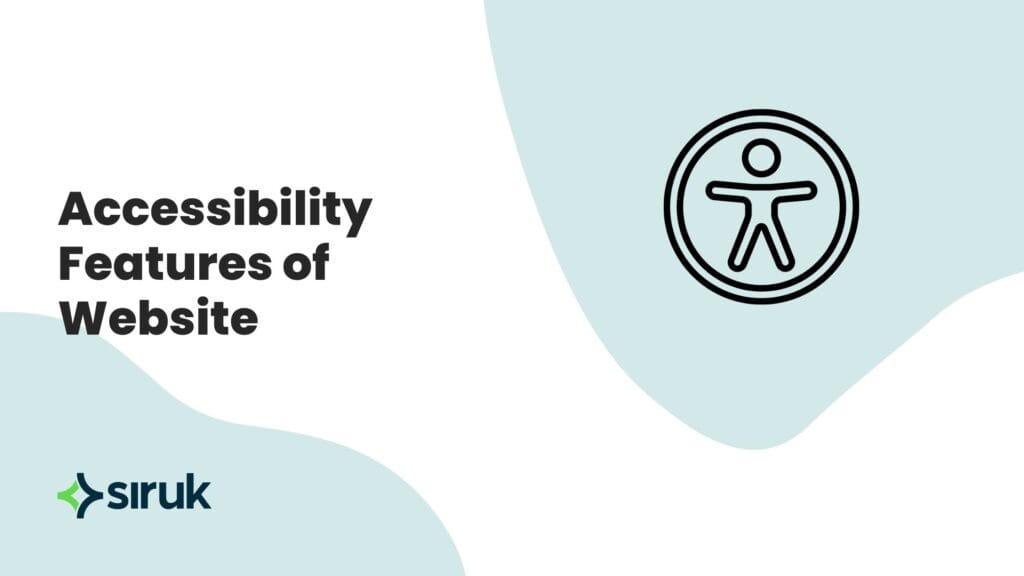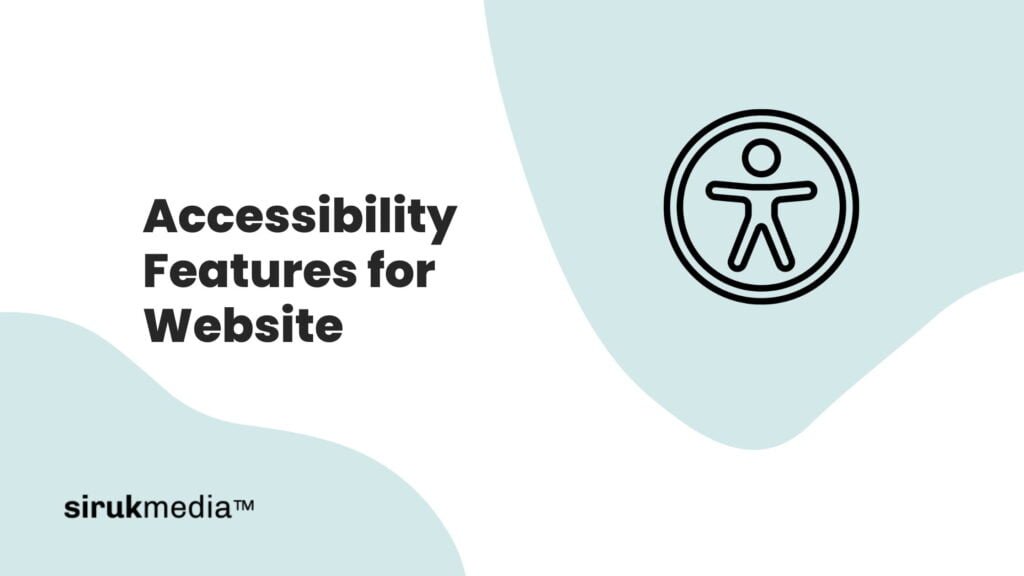Ever landed on a site and thought, “Why can’t I just use this?” That’s usually because it’s missing key accessibility features of websites. Investing a few minutes now can open your content to everyone—keyboard users, screen readers, or anyone with low vision—and even boost your SEO. According to WebAIM’s 2025 report over 94% of homepages have at least one accessibility error, and MDN’s Accessibility guide is a great place to start learning the basics. Ready for some quick wins? Let’s roll.
1. Keyboard-Only Navigation
Some visitors never pick up a mouse. They hit Tab to move around.
- Keep it in order. Make sure links, buttons, and form fields follow your HTML flow.
- Highlight focus. Add a clear outline when something’s focused:
:focus {
outline: 3px solid #005fcc;
outline-offset: 2px;
}- Skip extra tabindex. Only use it on real interactive elements.
2. Good Alt Text for Images
Alt text is one of the easiest accessibility features of websites—and it helps search engines too.
- Bad:
<img src="chart.png" alt="chart"> - Better:
<img src="chart.png" alt="Quarterly sales growth chart">
If an image is purely decorative, use alt="" so screen readers skip it.
3. Use Semantic Tags & ARIA Roles
Help screen readers map out your page by using real HTML5 tags and ARIA roles.
<nav role="navigation">…</nav>
<main role="main" id="main">…</main>
<aside role="complementary">…</aside>
<footer role="contentinfo">…</footer>That’s another key accessibility feature of websites—clear structure.
4. Ensure Good Color Contrast
Light gray on white? Hard to read. Aim for at least 4.5:1 contrast.
- Test it. Grab any free contrast checker online.
- Fix it. Darken text or lighten backgrounds:
body { color: #333; background: #fff; }5. Make Text Scalable & Layout Flexible
When users zoom in up to 200%, your design shouldn’t break.
{ font-size: 100%; } /* 1rem = 16px */
h1 { font-size: 2rem; }
.container {
display: flex;
flex-wrap: wrap;
}Relative units (rem, %) keep everything flowing.
6. Label Your Forms Clearly
Unlabeled inputs or hidden errors confuse everyone.
- Pair each
<input>with a<label>:
<label for="email">Email address</label>
<input id="email" name="email" type="email">- Link hints and errors with
aria-describedby:
<input id="email" aria-describedby="emailHelp emailError">
<small id="emailHelp">We’ll never share your email.</small>
<p id="emailError" role="alert">Please enter a valid email.</p>7. Add a Skip-to-Content Link
A “Skip to main content” link is one of the simplest accessibility features of websites for keyboard users.
<a href="#main" class="skip-link">Skip to main content</a>
<style>
.skip-link { position: absolute; left: -999px; }
.skip-link:focus {
left: 10px; top: 10px;
background: #005fcc; color: #fff;
padding: 8px; z-index: 1000;
}
</style>8. Provide Captions & Transcripts
Videos without captions shut out hearing-impaired users—and you lose search value.
- Upload or hand-write SRT caption files.
- Publish a text transcript under the video.
9. Run Automated Accessibility Checks
Catch problems before they go live.
- Lighthouse in Chrome DevTools
- axe-core via npm or browser plugin
- WAVE online tool
You can even plug axe into your CI pipeline to block builds with errors.
10. Use ARIA Live Regions for Updates
When content changes dynamically (like showing “Saved!”), screen readers need a heads-up.
<div aria-live="polite" id="notify"></div>Update that div with JavaScript, and assistive tech will announce it.
Wrap-Up
Building in these accessibility features of websites isn’t a one-and-done project—it’s an ongoing habit that pays dividends in user satisfaction and search rankings. Start small: pick two or three items from this list (like clear alt text, keyboard navigation, or contrast fixes) and tackle them today. You’ll instantly make your site easier to use for people who rely on assistive tools, and you’ll also send positive signals to search engines.
Over time, weave the rest of the items into your workflow—run regular checks with Lighthouse or axe-core, update your style guide with focus styles, and add captions every time you post a new video. Before you know it, accessibility will be baked into every new feature you build.
Want a head start? Drop us a line at contact@siruk.io or fill out our quick form on the contact page. We’re always here to help make your website welcoming to everyone—let’s get started!

